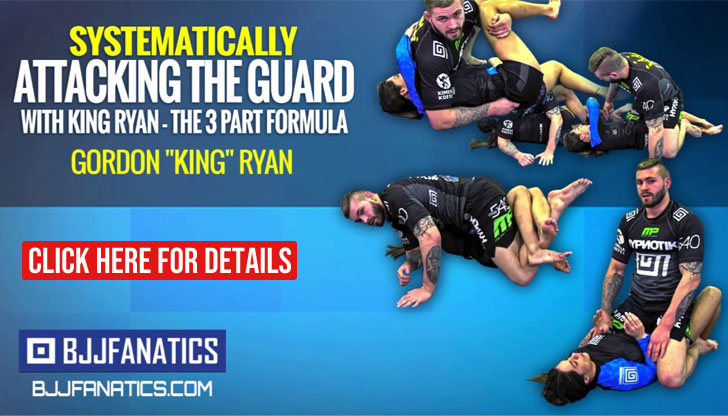Jonatas Novaes is a former mixed martial arts (MMA) fighter and a jiu-jitsu black belt under de legendary Eduardo Jamelão, who also worked extensively with names such as Robert Drysdale and Rodrigo Medeiros (Comprido). In the grappling world, Jonatas Novaes is well recognized for his creative use of the half-guard position (flat half-guard) as well as for his numerous international titles in the International Brazilian Jiu-Jitsu Federation (IBJJF) and United Arab Emirates Jiu-Jitsu Federation (UAEJJF).
Jonatas Novaes Jiu-Jitsu
Full Name: Jonatas Novaes do Nascimento
Nickname: Jonatas is often referenced as “Peixe Frito”, which stands for Fried Fish in Portuguese, Novaes’ mother tongue. The name started being used when Jonatas was a teenager, due to his thin physique. The young Brazilian would often, jokingly, show off his protruding rib-cage which drove people to label him Peixe Frito.
Lineage: Carlos Gracie > Helio Gracie > Rolls Gracie > Romero Cavalcanti > Eduardo Jamelão > Jonatas Novaes
Main Achievements:
- 1st Place UAEJJF Abu Dhabi World Pro (2017 Master 2)
- 1st Place IBJJF World Championship No-Gi (2011 / 2013 / 2017 Master 1)
- 1st Place UAEJJF Grand Slam, TYO (2016)
- 2nd Place IBJJF Pans Championship No-Gi (2011 / 2012 Master 1)
- 2nd Place CBJJ Brazilian Nationals No-Gi (2010)
- 2nd Place IBJJF World Championship No-Gi (2012 / 2015 Master 1)
- 2nd Place IBJJF Pans Championship (2011 / 2014 Master 1)
- 3rd Place IBJJF Masters World Championship (2019)
- 3rd Place IBJJF World Championship No-Gi (2011* / 2016 Master 1)
Other Important Achievements:
- 1st Place IBJJF Los Angeles BJJ Pro (2018 Master 1)
- 1st Place IBJJF Las Vegas Summer Open (2015 Master 1)
- 1st Place IBJJF Las Vegas Spring Open (2015 Master 1)
- 1st Place IBJJF Rome Open (2018 Master 1)
- 1st Place UAEJJF Las Vegas International (2016)
- 1st Place JJWL American Super Championship (2016)
Favorite Position/Technique: Flat Half-Guard
Weight Division: N/A
Team/Association: Channel Islands JJ
Jonatas Novaes Biography
Jonatas Novaes was born on December 03, 1981, in Conceição da Barra, a small beach town located in the Brazilian state of Espírito Santo, where he grew up.
A sporty child by nature, Novaes practiced an array of activities as a kid which led him to decide on a career in sports as his adulthood goal. Among the many athletic endeavors played by the Espirito Santo native during his youth were surfing, beach volleyball and football (soccer) competitively, as well as cross country and swimming.
During his mid-teens, Jonatas’s older brother, who lived and trained BJJ in neighboring Linhares, started teaching Novaes a few basic grappling maneuvers every time he came to visit. Soon after these initial BJJ concepts taught by Jonatas’ brother, another white belt by the name of Adezil Souto moved to Jonatas’ hometown and, as there was no jiu-jitsu instruction there, started coaching. It was with Souto that Novaes gave his first official steps in this sport.
Adezil soon was awarded his blue and purple belts, and it was he who graded Jonatas Novaes with his blue and purple belts over the years. The promotions being supervised by the region’s head coach Edvaldo Oliveira Maguila.
As a purple belt, with his aspirations of one day becoming a full-time athlete, Jonatas decided to swap academies and become a pupil of Eduardo Jamelão, the region’s greatest athlete at the time. Jamelão was of extreme importance in Jonatas’ growth as a competitor, and it was under the former Alliance team legend that Novaes earned both his brown and black belts, the latter in 2006.
2006 was also the year when Jonatas debuted on the mixed martial arts (MMA) arena, a step that would take him through a 9-year career and into a permanent move of residence to the United States of American in 2008.
While in the US, Novaes trained with an array of legendary grapplers, including Rodrigo Comprido and Robert Drysdale before moving to California, to coach at the famous Paragon Academy in 2015. He would later leave Paragon to form his own team, Channel Islands BJJ in 2019.
Jonatas Novaes Flat Half-Guard Explained















